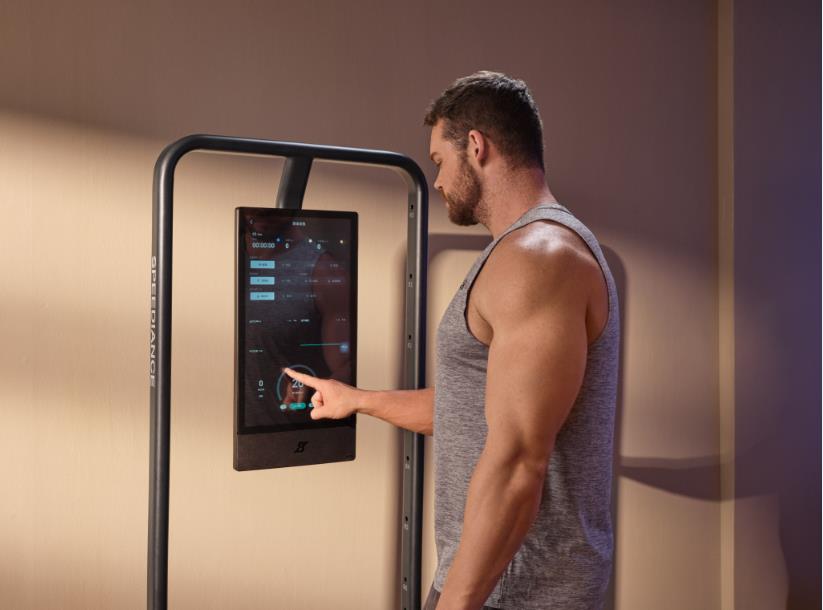

When you're pushing your limits during intense training—whether for endurance, strength, or power—one aspect that must not be overlooked is your respiratory health. While muscle fatigue or joint strain often take the spotlight, efficient breathing is a critical factor that determines how well you perform and recover. Properly monitoring your respiratory system can mean the difference between struggling through a workout and setting a new personal best.
This guide explores why monitoring respiratory health during intense training is crucial and how Speediance Smart Gym can help. Whether you’re an elite athlete or a fitness enthusiast, understanding and protecting your respiratory system is key to reaching your goals safely and effectively.
Understanding Respiratory Health and Intense Training
Your respiratory system plays a pivotal role in delivering oxygen to your muscles and removing carbon dioxide during exercise. As intensity increases, so does the demand for oxygen, requiring your lungs to work harder. However, overexertion can lead to breathing difficulties, impacting both performance and safety.
Key Insights
-
Breathing Rate and Oxygen Demand: Rising intensity increases your breathing rate to meet oxygen needs. Monitoring this helps gauge your fitness and adjust accordingly.
-
Lung Strain: Without proper breathing control, the lungs can become overstrained, causing dizziness, fatigue, or even asthma attacks.
-
Signs of Stress: Look out for wheezing, chest tightness, or shortness of breath, which signal that your respiratory system is under strain.
By proactively monitoring these factors, you can optimise performance while safeguarding your respiratory health.
Key Indicators of Respiratory Health
1. Breathing Rate
A controlled breathing rate reflects how efficiently your body meets oxygen demands. Uncontrolled, shallow breaths indicate overexertion.
-
What to Track: Aim for deep, steady breaths instead of rapid, shallow ones.
-
Pro Tip: Use breathing techniques to maintain control during intense workouts.
2. Oxygen Saturation (SpO2)
SpO2 levels measure how effectively oxygen is being delivered to your muscles. Lower levels can lead to fatigue and reduced performance.
-
What to Track: Monitor SpO2 using a pulse oximeter during high-intensity intervals.
-
Pro Tip: Pause and recover if levels drop significantly.
3. Peak Flow Measurement
For individuals with asthma or other respiratory conditions, peak flow measurements provide valuable insights into lung function.
-
What to Track: Measure airflow pre- and post-exercise to assess lung capacity.
-
Pro Tip: Significant drops post-workout may indicate the need for intensity adjustments.
4. Respiratory Rate Variability
Consistency in your breathing pattern indicates optimal lung function, while erratic breathing signals potential fatigue.
-
What to Track: Identify irregular patterns during high-intensity sets.
-
Pro Tip: Focus on diaphragmatic breathing for stability.
5. Chest Tightness and Shortness of Breath
These symptoms should not be ignored. They often signal that your respiratory system is overworked.
-
What to Track: Monitor any discomfort or tightness during workouts.
-
Pro Tip: Rest, hydrate, and, if necessary, use prescribed medication.
Tools for Monitoring Respiratory Health
Wearable Devices
Modern fitness trackers monitor heart rate, breathing patterns, and SpO2 levels. These devices can sync with Speediance Smart Gym to provide real-time feedback.
-
What to Track: Use wearables to assess heart rate and oxygen levels during exercise.
-
Pro Tip: Opt for devices that track recovery time to prevent overtraining.
Spirometry and Peak Flow Meters
Essential for those with asthma, these tools measure lung function and detect changes during intense training.
-
What to Track: Regularly measure lung function before and after workouts.
-
Pro Tip: Maintain a log to discuss patterns with healthcare providers if needed.
Breathing Apps and Monitors
Apps designed to improve breathing efficiency are excellent for enhancing lung capacity and control.
-
What to Track: Use real-time feedback from apps to fine-tune your breathing.
-
Pro Tip: Integrate these tools into cool-down routines for optimal recovery.
Preventing Respiratory Issues
Warm-Up and Cool-Down
Prepare your respiratory system with a proper warm-up and ensure recovery with cool-down stretches.
-
What to Do: Start with light cardio, followed by deep breathing exercises to cool down.
Pacing Intensity
Gradually increase workout intensity to prevent respiratory strain.
-
What to Do: Take regular breaks and modify intensity based on your capacity.
Controlled Breathing Techniques
Techniques like diaphragmatic breathing improve oxygen intake and reduce fatigue.
-
What to Do: Practice controlled breathing during workouts for enhanced endurance.
Hydration
Staying hydrated ensures that airways remain moist, reducing the risk of breathing difficulties.
-
What to Do: Drink water before, during, and after exercise.
How Speediance Smart Gym Supports Respiratory Health
Speediance Smart Gym empowers users to maintain respiratory health through tailored workouts and integrated monitoring tools:
-
Customised Training Plans: Adjust intensity based on your respiratory capacity.
-
Wearable Integration: Sync wearables to track breathing patterns, SpO2, and recovery in real-time.
-
Progress Tracking: Monitor how your respiratory health evolves with consistent training.
Conclusion
Monitoring respiratory health is essential for optimising performance and protecting your lungs during intense training. By paying attention to breathing patterns, oxygen levels, and lung function, you can achieve your fitness goals safely and effectively.
With Speediance Smart Gym you gain access to advanced tools that make respiratory monitoring seamless, enabling you to train smarter and perform better. Ready to take your fitness to the next level? Explore Speediance’s innovative solutions today, or contact us for personalised advice on achieving your best training outcomes.
